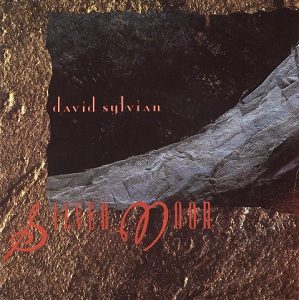(January 2013)
Hi Michael,
Here’s my list, with apologies for taking so long — confluence of holidays and the difficulties encapsulated in that old Lovin‘ Spoonful chestnut, „Did You Ever Have To Make Up Your Mind?“ Please let me know if you need more info/have any questions/etc. Thanks again for asking me to do this — great fun!
All best,
Liz
The only album here that gets any kind of ranking is Horses, which comes in at Number One. The rest are in no particular order. I love ‘em all.
1. Patti Smith, Horses
Along with the Beatles’ single “She Loves You“, which I heard on a car radio (not our car; it didn’t have a radio) as a six-year-old, this is the record that changed my life. I’d read about Patti Smith and got this album on the day it came out in 1975, riding my bike to New Canaan and buying it at the record store there. When I put it on the stereo at my parents’ house and heard the opening piano chords followed by Smith intoning “Jesus died for somebody’s sins but not mine,” I got goosebumps. I couldn’t believe this chick was saying that without getting struck by lightning. When I heard “Land,” I had an out-of-body experience. For me as an artist, everything has been before and after that song.
2. Iggy Pop, Lust for Life
This is here solely because of the title track, one of the greatest rock and roll songs of all time. I never listen to much else on the album, though “Turn Blue” is pretty great. I had a long list of Top Ten albums distinguished by a single cut; this is the only one that made it to the finals.
3. Joanna Newsom, The Sprout and the Bean
I know it’s twee, and I know some people can’t stand her voice. But I love this album. It reminds me of when I wrote “Illyria” in a three-week fever with this album on nearly constant rotation. Newsom’s fey voice and lyrics, and the delicate, dreamy production, all conspire to make me feel like I’m seventeen again, and anything could happen.
4. Fleet Foxes, Fleet Foxes
This is such a purely gorgeous album that, despite having heard it hundreds of times, sometimes two or three times in a row, I still don’t know the title of any of the songs — it’s all one prismatic sonic blur. My favorite line (also the only line I know): “Scarves of red tied ‚round their throats/To keep their little heads from falling in the snow.”
5. Replacements, Pleased to Meet Me
I have probably heard this album thousands of times since 1986, when my friend Paul Witcover gave me a tape. He was a big ‘Mats fan and saw them whenever they played NYC during their glory days with Bob Stinson; I was living in DC at the time and to my eternal regret never got to see them live, with or without Bob. “Valentine” is one of my five all-time favorite songs, up there with “Be My Baby” and “Land.” And if “Skyway” doesn’t make your heart ache, your heart is made of lead. My only complaint: I find the chorus of “Valentine” impossible to sing aloud.
6. Wilco, Summerteeth
Another album I must have listened to almost every day for a decade. I finally put it aside last year, and this morning found myself in the mood to dig it out again. Beautiful and eerie; the sunny “Pet Sounds” production belies the dark lyrics. You could write an entire essay about the influence of “Pet Sounds” on“Pieholden Suite,” though my favorite song is the alternate version of the brilliant “A Shot in the Arm,” a hidden track (along with “Candyfloss”) which gives “Sergeant Pepper” era John Lennon a run for his money in under four minutes. Gorgeous, desperate, and so dark it’s exquisitely painful to listen to. “Maybe all I need is a shot in the arm/Something in my veins, bloodier than blood.” An entire hidden thread of my life had this as its soundtrack (note: nothing to do with drugs). “You’ve changed: What you once were isn’t what you want to be anymore.”
7. Lou Reed, Magic and Loss
When I was nineteen, I wanted to be Lou Reed when I grew up. I loved the Velvet Undergound, and “Berlin” was one of my favorite albums in high school. Later, when I was in my late thirties, I heard this album and realized that “Magic and Loss” was Lou Reed when he grew up. It’s a wrenching look at mortality, centered on the deaths of two of Reed’s close friends and backgrounded in the AIDS epidemic, then at its height, and one of the few rock and roll albums with songs set in a hospital room. Yet it’s never depressing — Reed’s rage, always one of his best traits, is on ample display here, along with his caustic wit. The final track, “Magic and Loss: The Summation,” is the most purely transcendent rock and roll song ever written, and perhaps the greatest song ever penned about the torments and transformations of living life as an artist. Whenever I feel despair about my writing, I play this song, and I got my first tattoo — a ring of flames — as a reminder of its message.
8. Velvet Underground: Bootleg Series Volume 1: The Quine Tapes 9. Legendary stint at The Family Dog, San Francisco, in November 1969
I’ve always felt that putting down a Best Of album as a desert island disc choice is a cheat, and this selection is the closest I come to doing that. But it really does contain the greatest renditions of many of VU’s best songs. Recorded during the band’s legendary 1969 stints at The Family Dog and The Matrix in San Francisco (a city totally at odds with the Velvet Underground’s NYC ethos) by Robert Quine, who held a cheap tape recorder in his lap, the bootleg captures a remarkable moment in rock and roll history. Volume 2 never appeared, but I don’t know if it’s necessary. The live version of “Rock and Roll” is sublime — Lou Reed in is his intro to the song actually sounds happy. And the endless versions of “Sister Ray,” clocking in at 28 and 38 minutes, are fantastic.
9. Nick Drake, Bryter Layter
Drake’s greatest album, recorded before his beautiful, bleak swan song, “Pink Moon” and produced by the legendary Joe Boyd, who wrote about it at length in his memoir “White Bicycles.” Richard Thompson, Dave Pegg, and Dave Mattacks of Fairport Convention contributed, along with John Cale and several Beach Boys sessions musicians. Richard Kirby did the string arrangements, whose influence can be felt in contemporary folk musicians like Joanna Newsom, Fleet Foxes, Florence and the Machine, and Devendra Barnhart. The result is a shimmering masterpiece that lingers in the mind like the best, most ephemeral dream you ever had. And “Northern Sky” is a love song for the ages.
10. Beach Boys, Pet Sounds
It’s almost impossible to listen to any pop music of the last forty years and not hear echoes of „Pet Sounds“, one of the greatest and most influential rock albums of all time. Actually, it’s probably impossible to sit anywhere on Earth and watch the sun set and not think of „Pet Sounds“. Every song is perfect. Whatever drugs Brian Wilson was taking, I want some.













